 EN
EN
 PT
PT
Practical guide for teachers. Lower and upper secondary school
Product: Book
Trim size in cm: 14x21cm
Pages: 140
ISBN: 9788859025917
Publication date: 01/09/2021
Suitable for: Lower secondary 1st level (ages 10-11), Lower secondary 2nd level (ages 12-13), Upper secondary 1st level (ages 14-16), Upper secondary 2nd level (ages 17-19)
REQUEST A SAMPLE OR MORE INFORMATION
 Rights sold to:
Ukraine, Arabic language worldwide, Greece, Brazil
Rights sold to:
Ukraine, Arabic language worldwide, Greece, Brazil
In an easy-to-read format, this ready-to-use guide for teachers presents useful tips and indications for successfully tackling problem behaviours typical of Oppositional Defiant Disorder (ODD), providing effective strategies for managing a rebellious boy or girl at school.
After an in-depth first theoretical part, the volume proposes 12 chapters in which the problem behaviours typical of pupils with ODD in lower and upper secondary school are addressed.
Each chapter contains short opening paragraphs (Why does he/she do this?, What to value, What not to do), followed by a reflection on the judgments that the teacher should put on standby to avoid reacting impulsively to provocations (Thoughts to keep under control ) and the main specific intervention strategies (Some ideas on how to intervene). At the end of each chapter there are also some important notes from the formative experiences of the writer (Don’t forget that …), which are intended to remove some obstacles to action. The Appendix contains some suggestions for drawing up an intervention plan for the management of behavioral crises, to be shared with colleagues within the same institution.
1 – Doesn’t want to participate in classroom activities
2 – Uses vulgar terms and swear words
3 – Instigates classroom revolts
4 – Accuses the teacher of having prejudices
5 – Leaves the class without permission
6 - Continually asks to go to the bathroom
7 – Repeatedly contradicts the teacher
8 – Insults or makes fun of classmates
9 – Verbally provokes the teacher
10 – Wants to take revenge at school
11 – Doesn’t understand reprimands
12 – Doesn’t want to return to class

Quick guide for teachers
Lower and upper secondary school
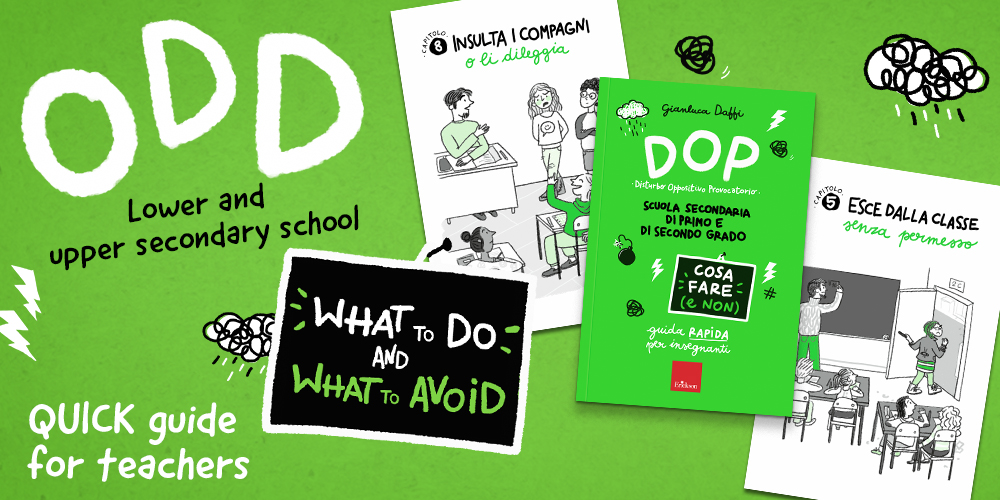
In the style of a Teacher Training notebook, this practical and ready to use volume presents tips, effective strategies and useful indications to successfully deal with 12 typical problem behaviours of Oppositional Defiant Disorder, ODD, and better manage 11 to 17 year old children in the classroom.
BOOK STRUCTURE AND CONTENTS
After an in-depth first theoretical part, ODD Oppositional Defiant Disorder WHAT TO DO (AND WHAT TO AVOID) proposes 12 chapters in which the typical problem behaviours of pupils with ODD in lower and upper secondary school are addressed.
The problem behaviours analyzed are:
What to o and what to avoid
The reason for each behavior is initially explained in a few brief sentences (Why does he/she do this?), followed by simple and clear indications for the teacher on the attitudes to be adopted and avoided (What to do, What NOT to do). A discussion on the topic follows (What to keep in mind) and tools and strategies are provided in How to intervene with regard to some crucial educational and didactic aspects. This is further explored in the paragraphs dedicated to Structuring and collaboration guidelines are then drawn up with parents and other school workers (The educational pact).
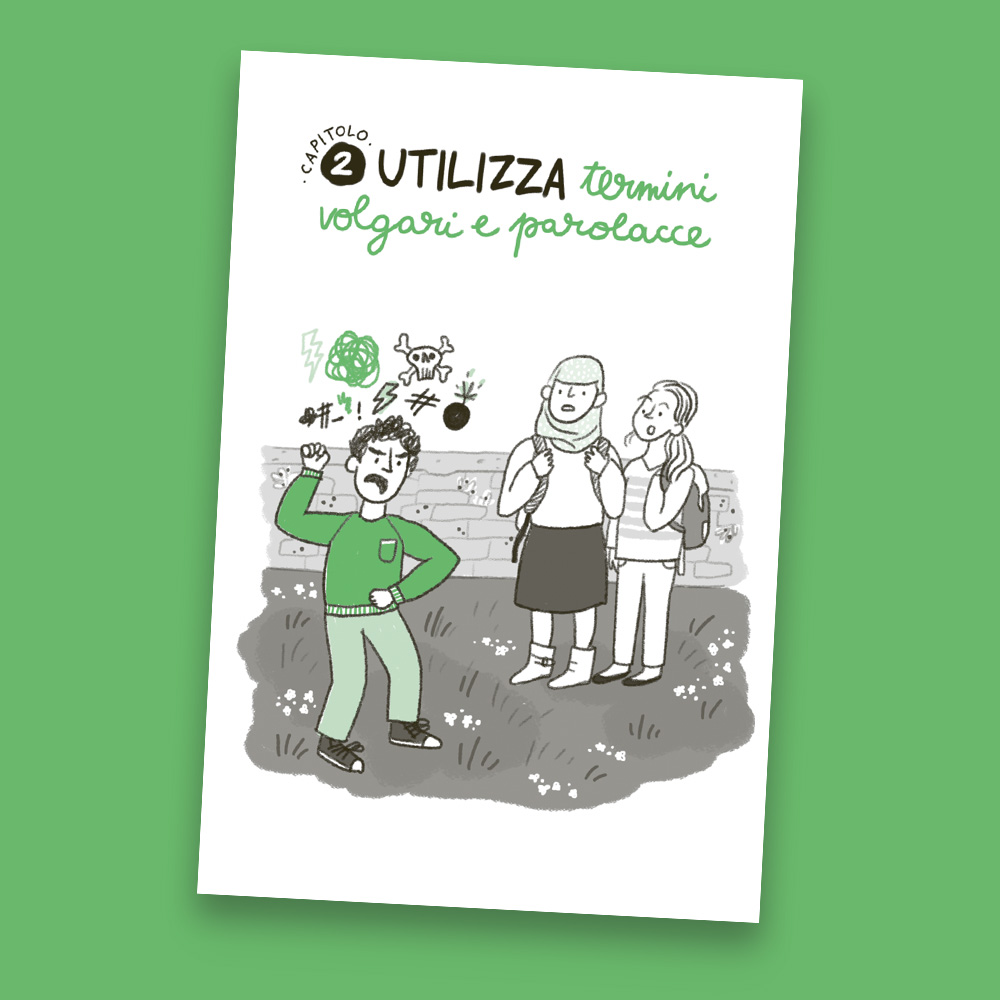
At the beginning of each chapter, a drawing introduces the analysed behaviour.
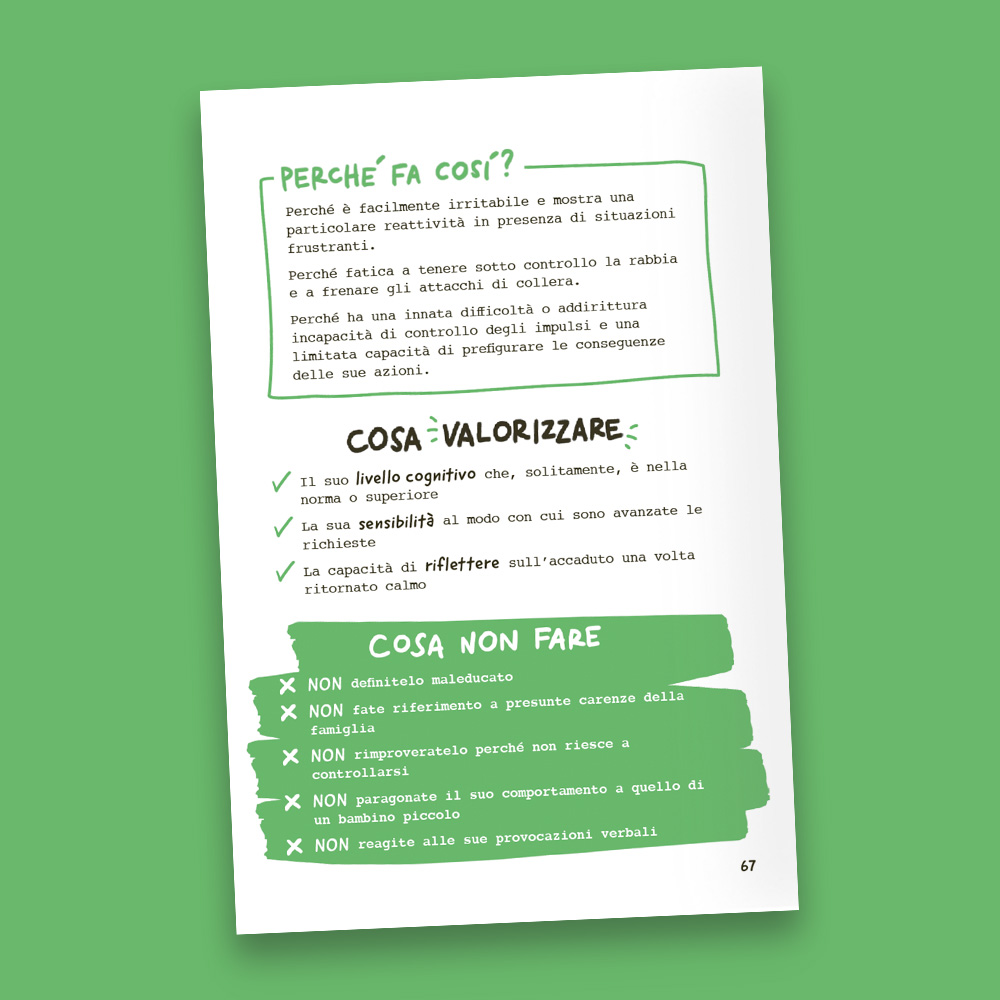
• Explanations of the problem behaviour being considered: Why does he/she do this? • Brief and simple indications that can be useful to the teacher as a reference point for quickly deciding What to do and reflect on What to avoid.
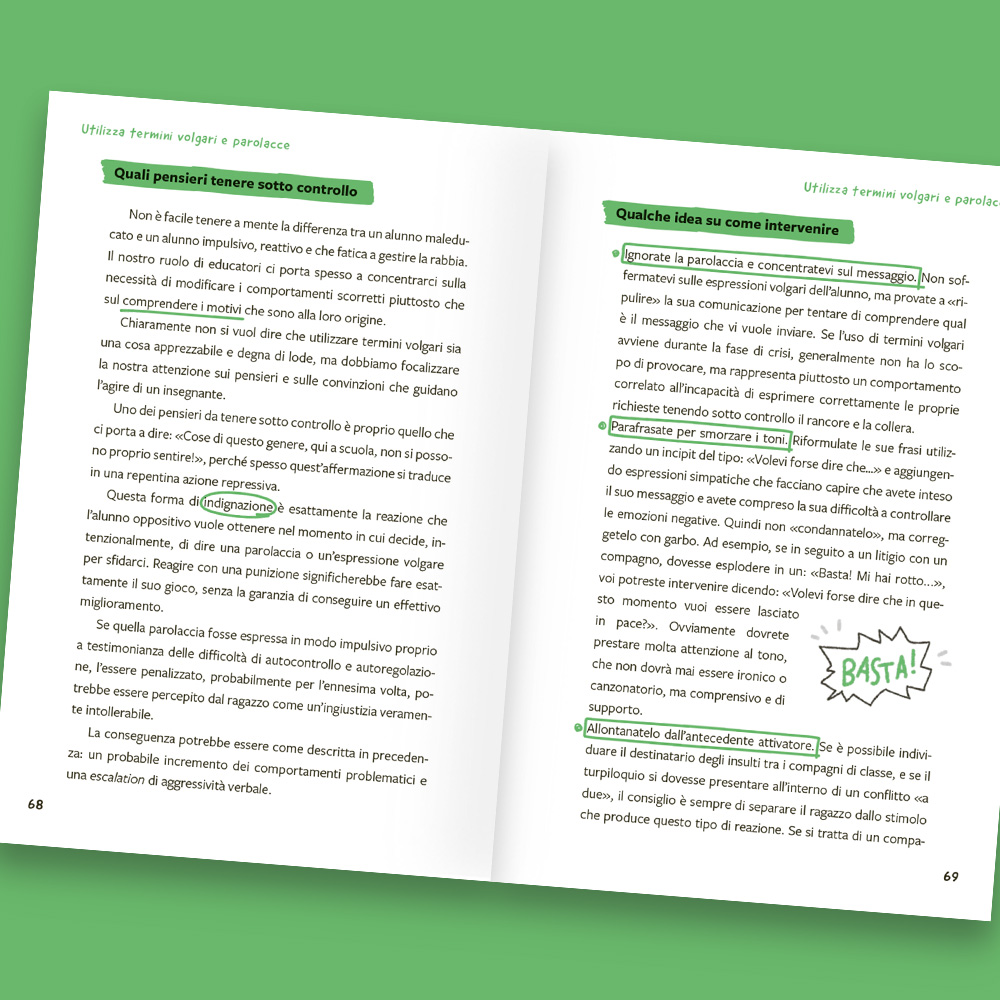
• A more in-depth description of the specific problem behaviourbeing worked on: Analysis of the problem behaviour. • The tools and educational strategies to create the intervention: How to intervene.
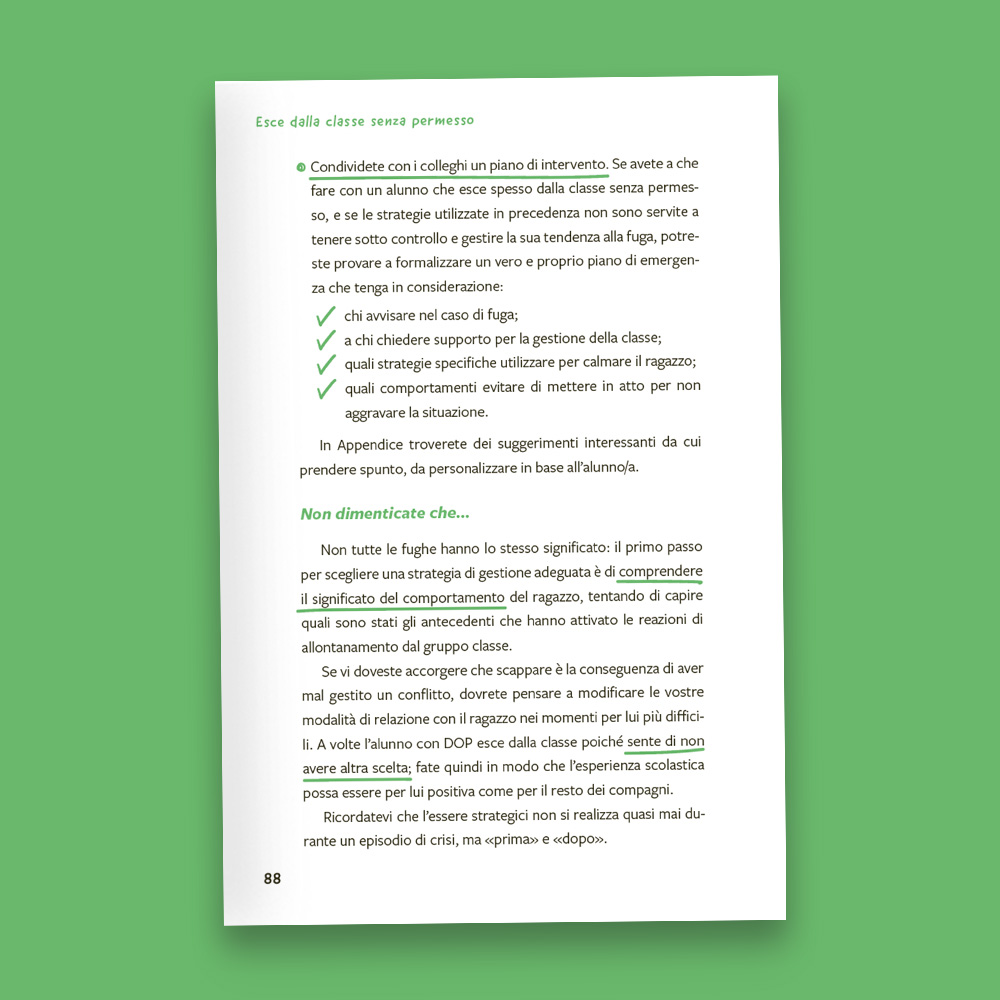
Each chapter closes with The expert advice: reflections to further understand and enrich the teacher’s “briefcase of educational tools”.
Appendix
The Appendix contains some suggestions for drawing up an intervention plan for the management of behavioral crises, to be shared with colleagues within the same institution.
Leaf through the worksheets in the Appendix, which have been translated into English to facilitate your evaluation:
THE AUTHOR
Gianluca Daffi: with a degree in Psychology and specialised in behavioural problems, he collaborates with the Department of Psychology and with the Learning and Educational Psychology Service of the Catholic University of the Sacred Heart in Milan. He has collaborated with IRRE Lombardy in the research group on personalisation and with the MIUR on the project for training and refreshing special needs teachers. A trainer for public authorities and private enterprises, he provides training for parents and teachers.